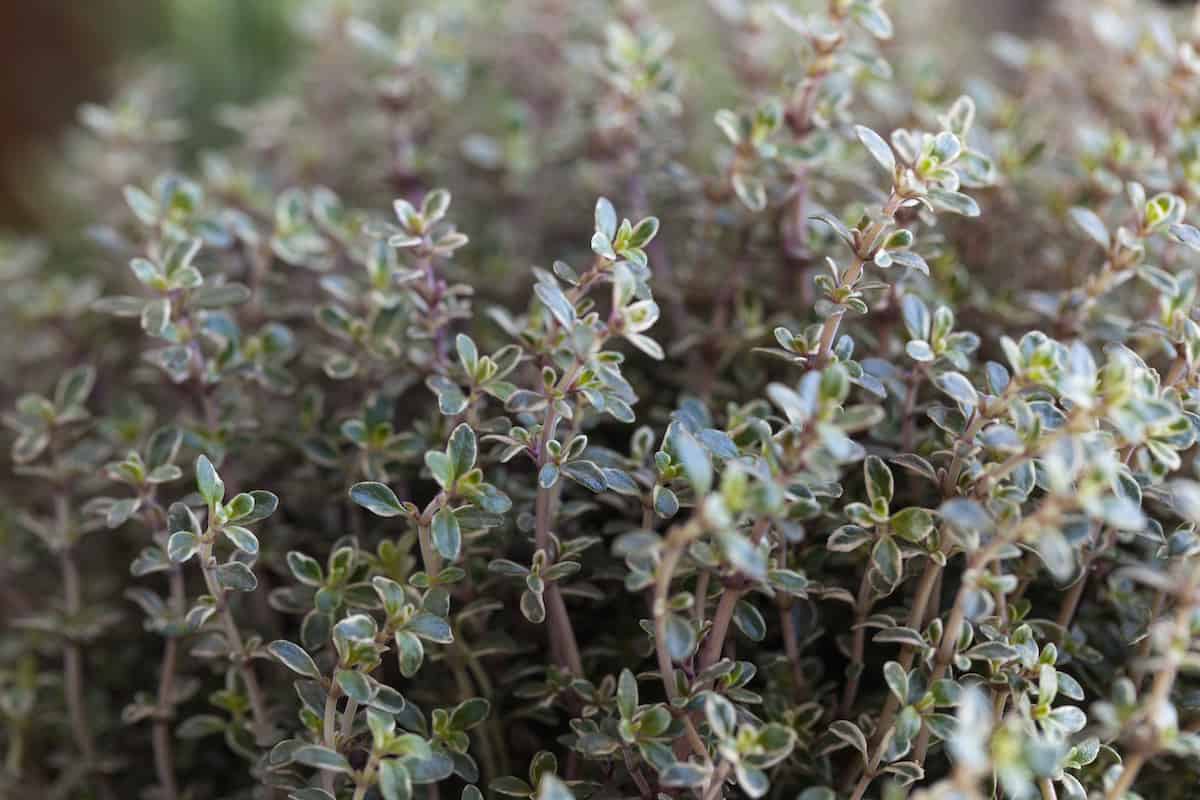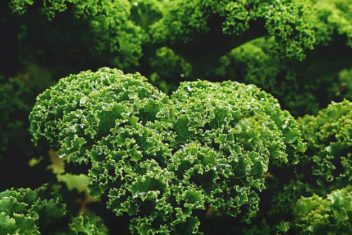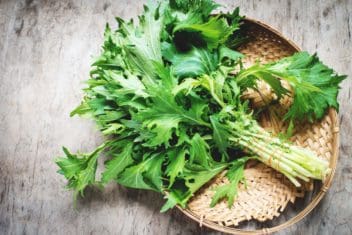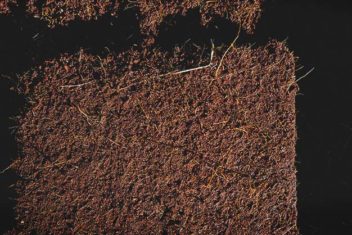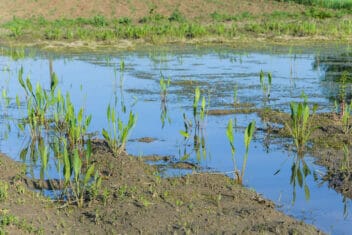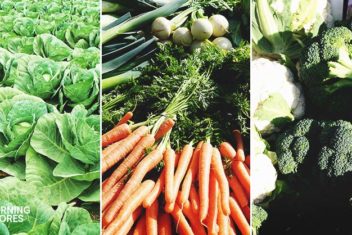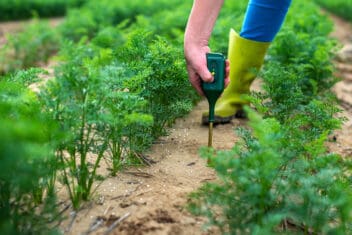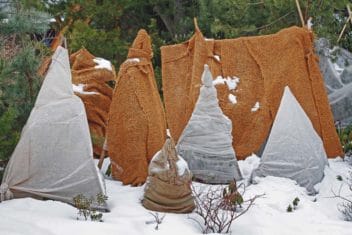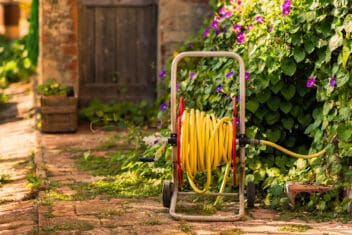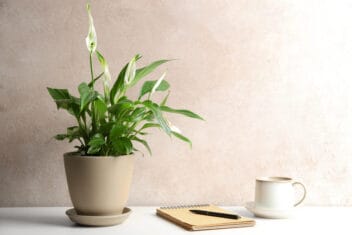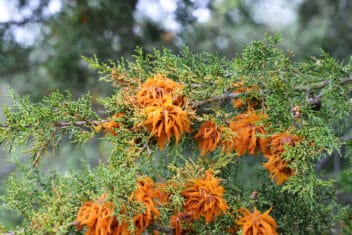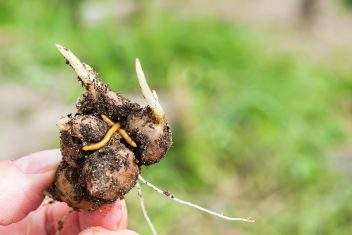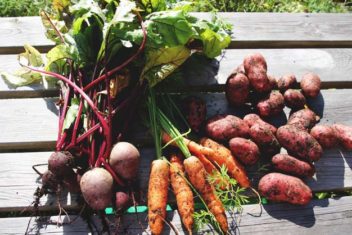Whether you live in a dry climate or tend to kill your plants by lack of watering, adding a few drought-tolerant herbs to your garden beds is a smart idea.
Not only will you ensure you have something alive if you forget to water or during the hottest summer months, but you can increase the diversity in your garden.
I like to add a few of these herbs because I know that something will survive by the end of the year. While I can water my garden beds, we depend on the rain to give us a boost in that department.
You might be surprised by how many herbs can survive a period of drought.
Let’s take a look at some herbs that handle drought conditions well.
1. Mullein
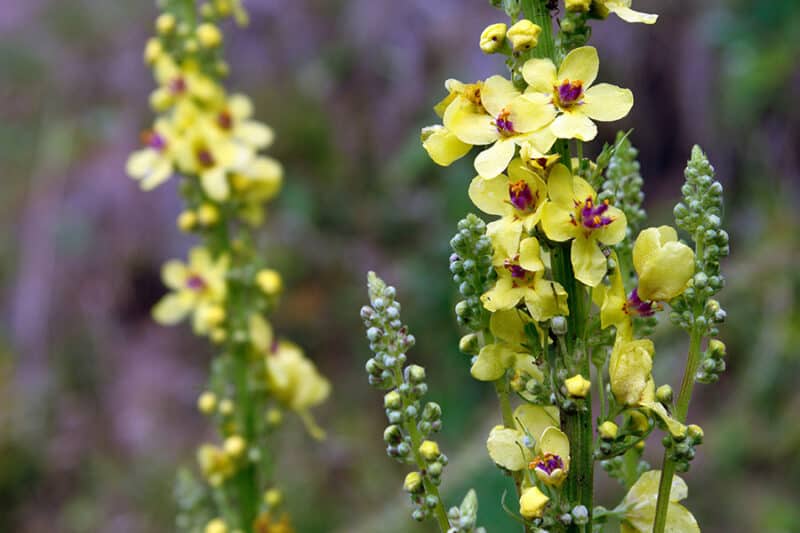
Here is an herb that doesn’t get nearly enough attention. Mullein is a tall, striking herb that has beautiful yellow flowers and soft, fuzzy green foliage. The plant is tall, reaching sometimes up to four feet tall, so it often towers above the rest of your garden plants.
In some areas, mullein grows wild, surviving on roadsides and deserted lots, so it’s capable of growing in low moisture and low fertile conditions. Once rooted and established in your garden, mullein can grow nearly anywhere and in any condition.
Due to its strong desire to survive anywhere, it’s considered an easy to grow herb. Children often like these plants because of their furry parts. You can use mullein as a medicinal herb to help get rid of ear infections.
It grows in USDA Zones 3-9.
2. Borage
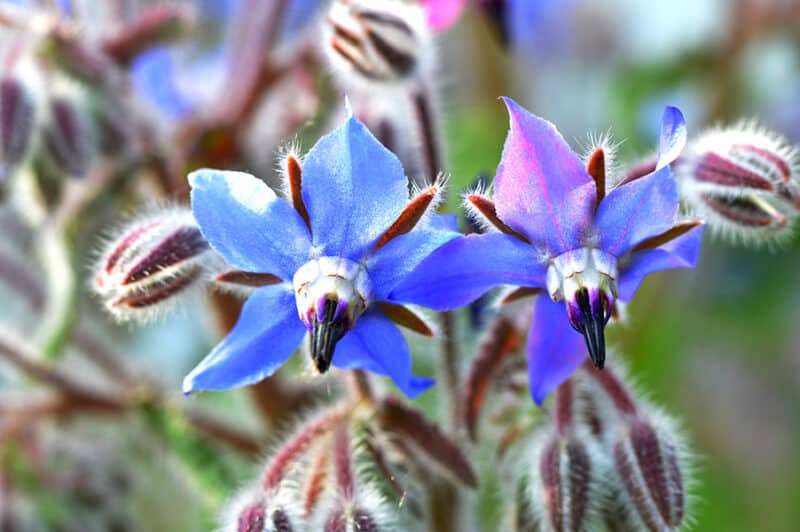
Here is another drought-tolerant herb that you might grow in your garden. Not only is it beautiful and edible, but it handles dry locations like it’s nothing.
Borage tends to spread out and grow rapidly, so if you grow it in a region that is very dry, it’s easier to control and stop the spreading. It’s also known for reseeding itself and growing wherever it wants.
If you like cucumbers, I recommend that you try growing borage plants. When the leaves are small, you can eat them. Try tossing them into salads; the leaves taste similar to cucumbers.
Borange is an annual, so it can grow anywhere.
3. Dandelion
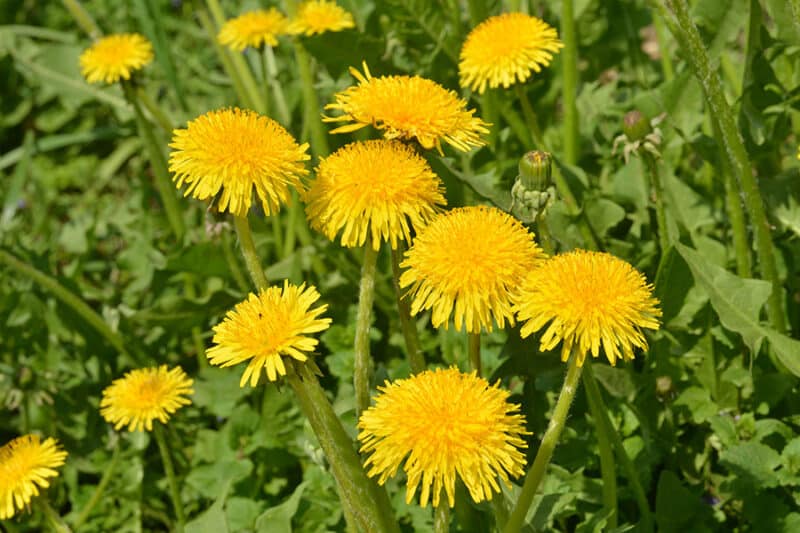
Most people don’t think of dandelions as an herb, but they’re growing in popularity as people learn just how versatile they can be in your garden and medicinal cabinet.
Dandelions grow nearly anywhere – fields, deserted lots, and roadways. It’s a strong plant that can withstand most conditions, including a drought. These bold plants appear where you don’t want them, but if you plant them purposefully, they’ll shine for the entire growing season.
Dandelion can grow in any zone in the U.S.
4. Sage
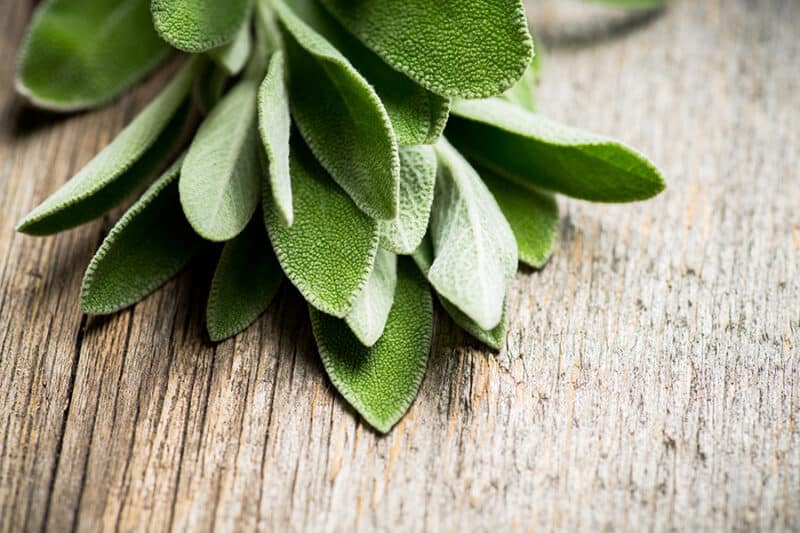
Here is an easy herb to add to your drought garden. It continues to grow in nearly any location regardless of the rainfall. Sage seems to continue to grow no matter where you plant it – unless it gets too wet!
Not only does it grow well in drought regions, but it works great as a backdrop in your garden. Sage has a bushy growth habit that will fill out your garden quickly.
Also, sage comes in a range of colors. Some are cream, mint green, variegated, and even pink!
It grows in USDA Zones 5-8.
5. Thyme
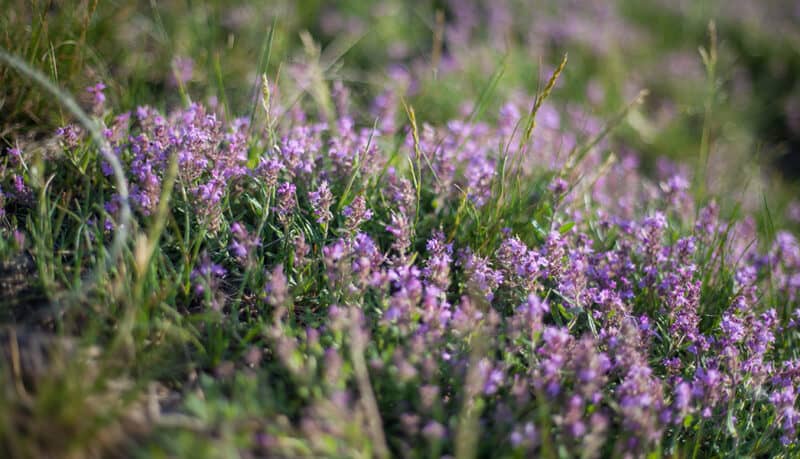
Thyme makes the list for top drought-tolerant herbs. Aside from having a delicious taste for your savory dishes, thyme grows between taller herbs and spreads around your garden nicely.
There are plenty of thyme varieties for you to pick. All of them survive with little rainfall.
It grows in USDA Zones 5-9.
6. Echinacea
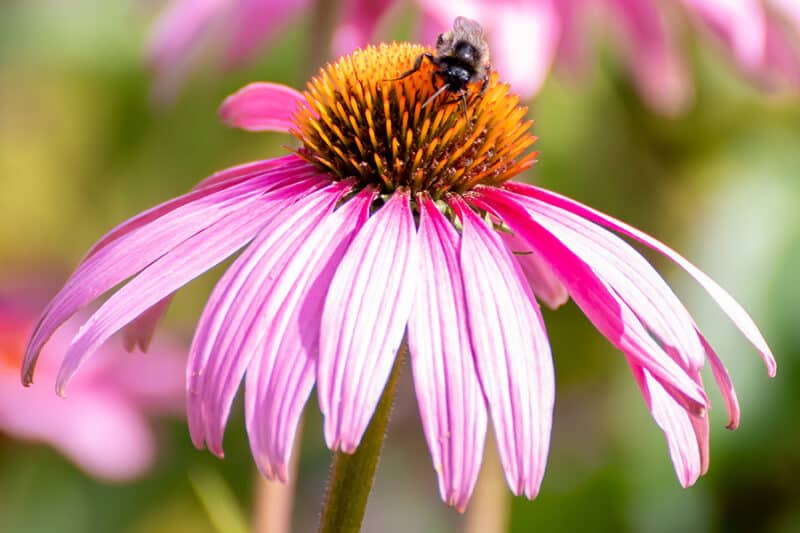
Echinacea is one of the most popular medicinal herbs that you can grow in your garden. It’s often grown in flower gardens, as well as medicinal herb gardens. Best of all, it can grow in nearly any location because it requires little water.
What you might not know is that echinacea grows in a rainbow of colors, not just pink! The flowers can be orange, gold, red, white, and everything in between.
Echinacea grows generously, so it’s best to divide the plants every 2-3 years. Otherwise, they can take over your garden beds.
It grows in USDA Zones 4-8.
7. Calendula
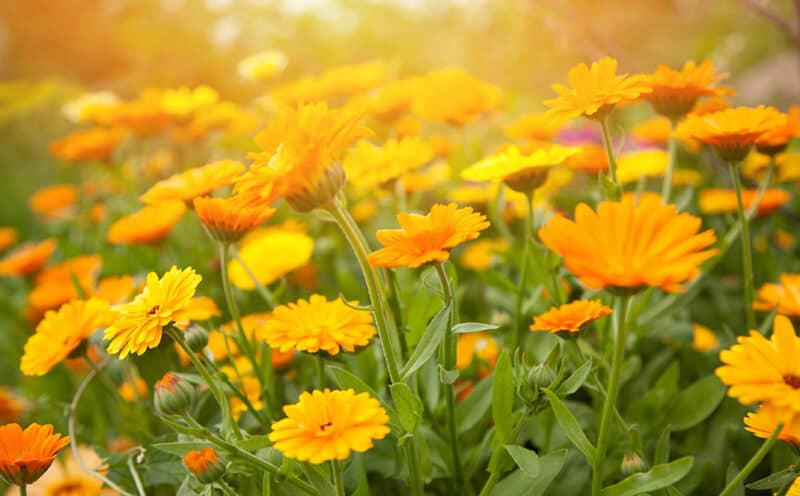
If you want to add a pop of color to your garden beds, calendula is the herb for you. It grows easily and adds a beautiful look to your drought garden.
Calendula is tolerant of lower temperatures and drought conditions. It’s a self-seeding plant that creates blooms ranging from yellow to orange.
Make sure that you harvest calendula often. The plant will continue to produce more blooms if you pluck it frequently. It’s best to harvest in the morning before the blossoms are fully open.
It can be grown as an annual in USDA Zones 2-11.
8. Rosemary

Rosemary is a Mediterranean herb, so it handles warm, drought conditions well. So, if you’re looking for drought-tolerant herbs, rosemary is a no-brainer. Make sure you include it.
Not only does rosemary grow better when it has little water, but the herb has way more flavor if the soil is dry. So, when you pick the leaves during drought conditions and dry the herbs, you’ll have even tastier meals later in the year.
Now, if you live in a cooler location, rosemary might not be the first herb that comes to mind because you know that it likes warmer temperatures. If you still want to grow rosemary, try growing it in a container that is placed inside of another pot in the ground. Doing so lets you grow it in your garden beds but then you can bring it inside before cold weather hits.
It’s a prennial in USDA Zones 9 and up.
9. Lavender
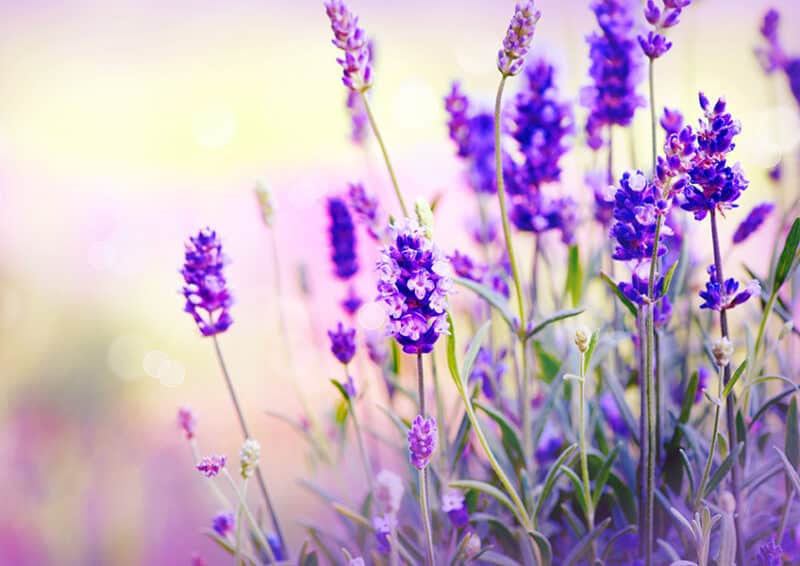
Nearly everyone loves lavender; its scent and versatility are appreciated by many, especially those looking for medicinal herbs. Lavender grows best in a sunny location with well-draining soil.
You can grow lavender as a hedge, a standard, or in containers. The lovely color pops in a garden that is full of greenery. Plus, you can harvest and save lavender for future uses. It has dozens of medicinal applications.
Not only does lavender grow well in locations without too much water, but you’ll find that the scent is intensified when the conditions are dry – and if you have intentions to use the herb in any herbal applications, it’s best to have the best-scented flowers possible.
It grows in USDA Zones 5-9.
10. Savory
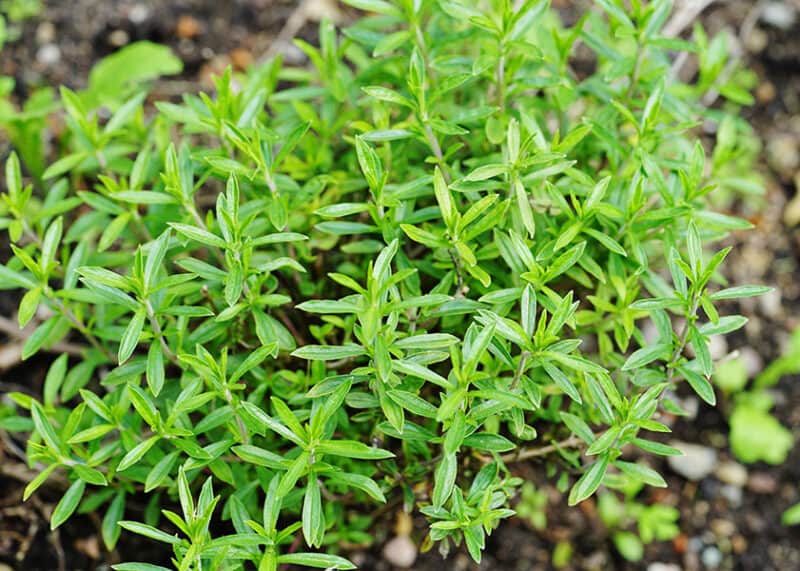
Savory is considered a historic herb; many people don’t plant it in gardens anymore, which is unfortunate. It has a delicious piney, peppery taste (depending on the type) and it isn’t too fussy.
There are two main types of savory: winter and summer. Winter savory is a perennial herb that can be used to flavor delicious dishes on your table. Summer savory is an annual that adds a peppery zing to your cooking.
It’s more versatile that though! You can even add these herbs to tea mixes and dessert dishes.
Winter savory grows in USDA Zones 5-11.
Tips for Growing Drought Tolerant Herbs
One of the appeals for growing these herbs is that most survive with little to no help from you. They can thrive in inhospitable areas that are hot and dry. Most evolved from plants that originate in the Mediterranean or other similar climates.
Here are a few tips.
- Make sure that you amend your soil well. Soil amendment is the key to success with many of these herbs. Even though they do well in soil that isn’t fertile, all plants grow better with some compost worked into the soil.
- Ensure your soil is well-draining. Most of these herbs prefer not to have wet feet. So, if you have heavy rains, you don’t want them soaking in puddles.
- Space your plants well, especially if you live in an area that is humid. Doing so helps to prevent fungal diseases from developing.
- Mulch around your plants in your garden beds. Not only does mulch retain moisture in the soil, but it also stops water from collecting on the leaves.
Adding a few drought-tolerant herbs to your garden ensures something is always growing. These herbs survive with little to no rain, and many have a better taste when the conditions are dry.
